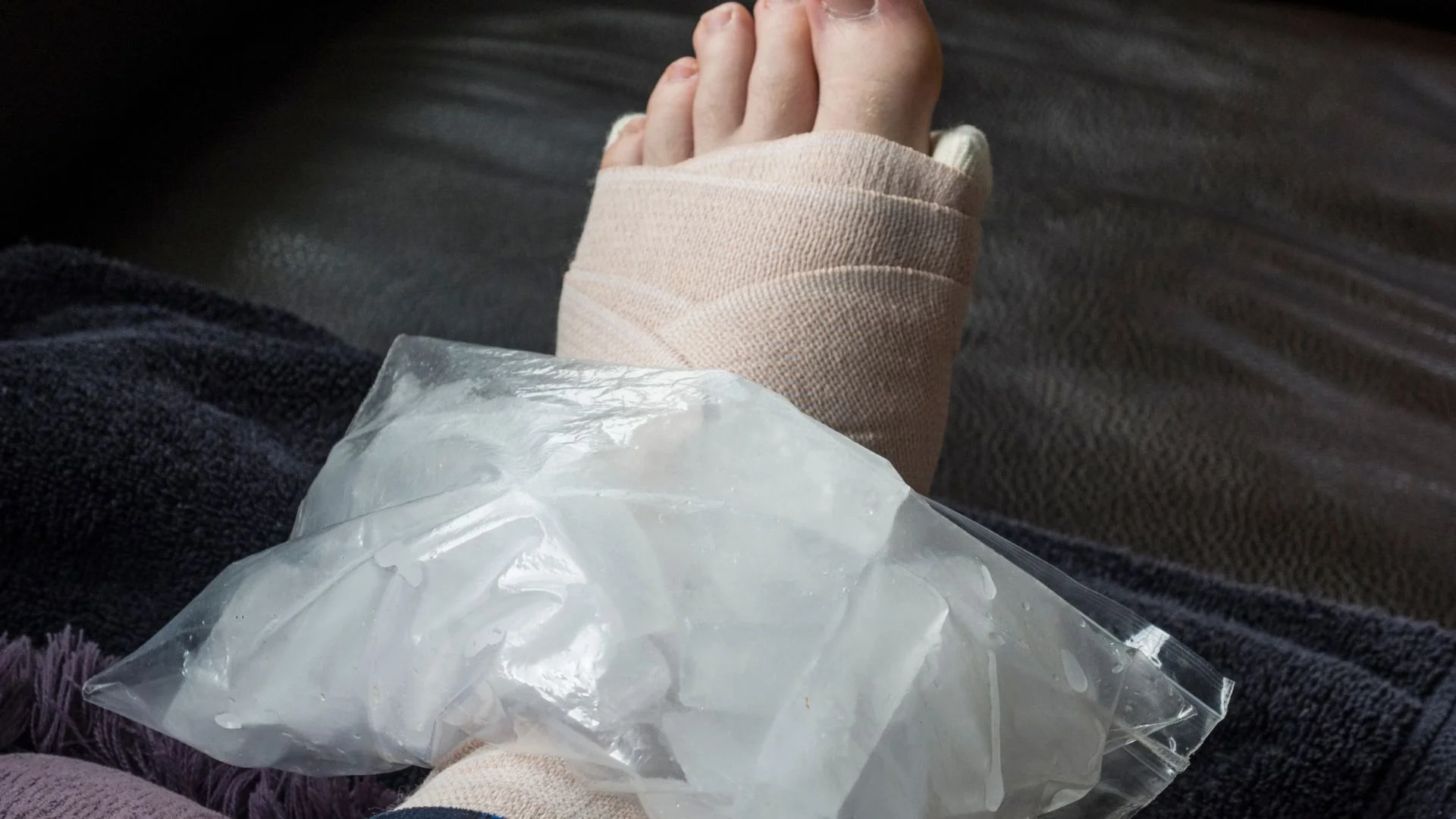
Ankle Sprain Treatment in Gastonia, NC
Regain Stability and Speed Your Recovery at Carolina Foot and Ankle Specialists
Did you twist your ankle, resulting in sudden pain, swelling, and difficulty walking? An ankle sprain is a common injury that can range from a minor inconvenience to a severely debilitating condition.
At Carolina Foot and Ankle Specialists in Gastonia, NC, we understand that an ankle sprain can disrupt your daily life, athletic pursuits, and overall comfort. Our experienced podiatrists are dedicated to providing prompt and accurate diagnosis, followed by effective, personalized treatment plans.
Our goal is to help you heal properly, restore full stability, and prevent chronic issues, ensuring you can confidently return to your activities here in the Gastonia community.

Understanding Ankle Sprains: When Ligaments Are Stretched or Torn
An ankle sprain occurs when the strong ligaments that support your ankle joint are stretched beyond their normal limits or torn. Most ankle sprains happen when the foot twists or rolls inward (an inversion sprain), damaging the ligaments on the outside of the ankle. Less commonly, the foot can roll outward (an eversion sprain), affecting the inner ankle ligaments.
Ankle sprains are typically classified into three grades based on the severity of the ligament damage:
Grade 1 (Mild)
Ligaments are stretched, causing microscopic tears. You might experience mild pain, tenderness, and slight swelling.
Grade 2 (Moderate)
Ligaments are partially torn. This often results in moderate pain, significant swelling, bruising, and some instability. Walking can be painful.
Grade 3 (Severe)
Ligaments are completely torn. This leads to severe pain, extensive swelling, bruising, and considerable instability. Bearing weight on the ankle is usually impossible.
Proper healing is crucial as an untreated sprain can lead to chronic ankle instability and recurring injuries.

Common Causes of Ankle Sprains
Ankle sprains frequently occur during activities that involve sudden changes in direction, uneven surfaces, or impacts. Common scenarios leading to an ankle sprain include:
Uneven Surfaces: Stepping awkwardly on an uneven sidewalk, curb, or trail.
Sports Activities: Landing improperly after a jump, sudden stops or pivots in sports like basketball, soccer, or tennis.
Falls: Tripping or falling, causing the ankle to twist unexpectedly.
Improper Footwear: Wearing high heels, unsupportive shoes, or shoes that don't fit well can increase the risk.
Previous Ankle Sprains: A history of ankle sprains can weaken the ligaments, making re-injury more likely.
Weak Ankle Muscles: Insufficient strength in the muscles surrounding the ankle can reduce its stability.
Sudden Trauma: A direct blow to the ankle.
Recognizing the Symptoms of Ankle Sprains
The symptoms of an ankle sprain can vary depending on the severity of the injury. If you suspect an ankle sprain, especially if you cannot bear weight, it's important to seek professional evaluation from our Gastonia podiatrists to rule out a fracture. Common symptoms include:
Immediate Pain: Often sharp and localized to the injured area, typically on the outside of the ankle.
Swelling: Rapid onset of swelling around the ankle joint.
Bruising: Discoloration may appear shortly after the injury or develop over several hours/days.
Tenderness to Touch: The injured ligaments will be painful when pressed.
Limited Range of Motion: Difficulty moving the ankle, especially rotating or flexing the foot.
Instability: A feeling of the ankle "giving way," particularly with more severe sprains.
Popping Sound/Sensation: Some individuals may hear or feel a "pop" at the time of injury, especially with severe tears.
Effective Treatments for Ankle Sprains at Carolina Foot and Ankle Specialists
At Carolina Foot and Ankle Specialists, our priority is to ensure your ankle heals correctly to prevent chronic pain and instability. After a thorough examination, which may include X-rays to rule out fractures, our Gastonia podiatrists will develop a tailored treatment plan. Our comprehensive approach may involve:
Immediate Care (R.I.C.E. Protocol)
Rest: Limiting weight-bearing and activity to allow the ligaments to heal.
Ice: Applying ice packs to reduce swelling and pain.
Compression: Using an elastic bandage or compression sock to minimize swelling.
Elevation: Keeping the ankle elevated above heart level to reduce fluid accumulation.
Immobilization and Support
Bracing or Taping: Providing external support to stabilize the ankle during the healing process, protecting the injured ligaments.
Walking Boot or Crutches: For more severe sprains, a walking boot or crutches may be necessary to offload the ankle and promote healing.
Rehabilitation and Strengthening
Physical Therapy Referrals: Crucial for regaining strength, flexibility, balance, and proprioception (your body's awareness of its position). We'll guide you through a progressive rehabilitation program.
Home Exercise Program: Providing specific exercises you can perform at home to aid in recovery and prevent re-injury.

Advanced Treatment Options (For Persistent Issues or Severe Cases):
Regenerative Medicine (Stem Cell Injections)
For chronic ankle instability or slow-healing sprains, we may offer regenerative medicine options like stem cell injections. These advanced therapies can help stimulate the body's natural healing processes and strengthen damaged ligaments, promoting more robust recovery.
Minimally Invasive Surgery
While most ankle sprains heal without surgery, for a small percentage of patients with severe, recurrent instability or specific ligament damage that doesn't respond to extensive conservative care, our podiatrists are skilled in minimally invasive surgical techniques. These procedures aim to repair or reconstruct damaged ligaments, often with smaller incisions and potentially faster recovery times. We will thoroughly discuss if this advanced option is appropriate for your unique condition.
A properly treated ankle sprain is key to avoiding long-term complications. If you've sprained your ankle, or are experiencing recurring ankle instability, don't delay seeking expert care. Contact Carolina Foot and Ankle Specialists in Gastonia, NC, today to schedule your comprehensive evaluation. Our dedicated team is ready to help you heal effectively, regain your ankle's strength and stability, and confidently return to all your activities.




